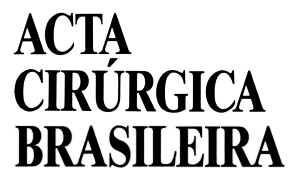ABSTRACT
Purpose: Plastic biliary stents are a cost-effective treatment for biliary obstruction. Unfortunately, they have low patency, related to intraluminal biofilm formation. Silver nanoparticles (AgNPs) have been increasingly used in biomedicine because of its antibacterial properties. This study aimed to compare biofilm formation on stents with and without silver nanoparticle coatings when in contact with different bacterial culture medium.
Methods: Different types of silver coatings were tested on plastic biliary stents. Two groups of stents were analyzed: one group with various types of silver nanoparticle coatings, and a negative control group with no coating. The stents were placed in different bacterial culture media and assessed for biofilm formation. Analysis was performed using confocal microscopy and direct colony-forming unit (CFU/cm2).
Results: Quantitative analysis showed promising results with C16 coating, as Escherichia coli ATCC and Pseudomonas aeruginosa ATCC exhibited reduced growth in the AgNP-coated group (p < 0.05). However, when mixed samples, including clinical strains and Staphylococcus aureus, were tested, the AgNP coating did not inhibit bacterial growth.
Conclusion: AgNP-coated stents are effective against certain strains, such as E. coli ATCC and P. aeruginosa. Further research is needed to explore potential improvements in the coating mechanism.
Key words
Biliary Tract; Biofilms; Cholangiopancreatography, Endoscopic Retrograde; Nanoparticles

 Comparison between biliary plastic stents with and without application of silver nanoparticles: an in-vitro study of the biofilm formation
Comparison between biliary plastic stents with and without application of silver nanoparticles: an in-vitro study of the biofilm formation Thumbnail
Thumbnail
 Thumbnail
Thumbnail
 Thumbnail
Thumbnail
 Thumbnail
Thumbnail
 Thumbnail
Thumbnail
 Thumbnail
Thumbnail
 Source: Elaborated by the authors.
Source: Elaborated by the authors.
 Source: Elaborated by the authors.
Source: Elaborated by the authors.
 Source: Elaborated by the authors.
Source: Elaborated by the authors.
 Source: Elaborated by the authors.
Source: Elaborated by the authors.
 Source: Elaborated by the authors.
Source: Elaborated by the authors.
 Source: Elaborated by the authors.
Source: Elaborated by the authors.